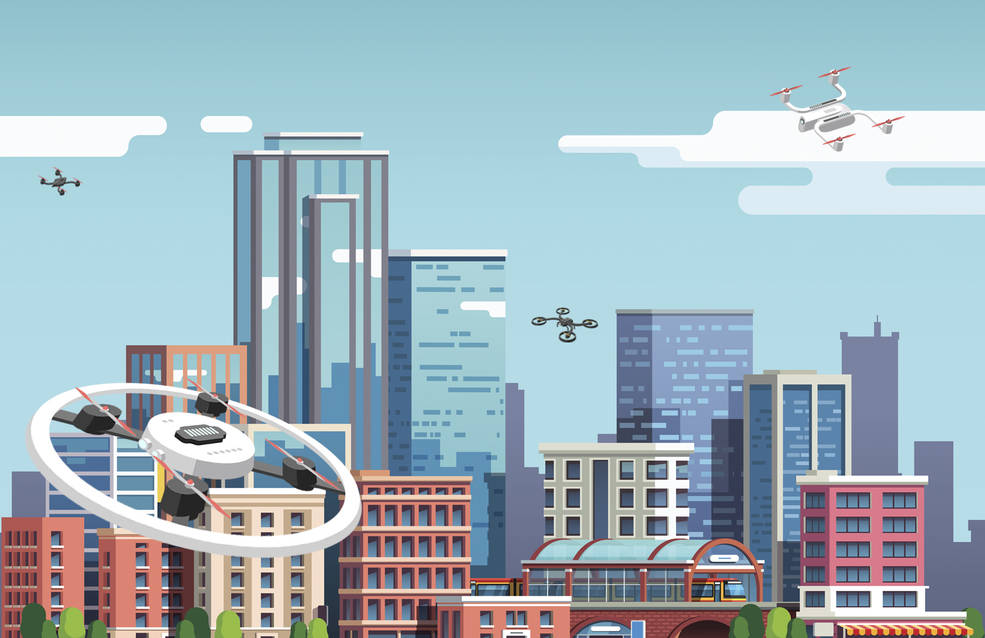NASA Chooses Two Organizations to Test Urban Drone Traffic Management

To ensure safety as more drones take to the skies, NASA has selected Texas and Nevada to host the final phase of a project to develop a drone traffic management system. The space agency has been working on this project with a goal of establishing policies for operating drones safely over populated areas.
Lone Star UAS Center for Excellence & Innovation on Texas A&M campus and Nevada Institute for Autonomous Systems in Las Vegas. In Nevada, the flights will take place between March and June and in Texas, they will take flight between July and August.
This project is to help the commercial drone industry understand the challenges that arise with flying in an urban environment. The results of the tests will also help to establish future policies and procedures for operating drones and other Unmanned Aircraft Systems (UAS) safely over populated areas.
Drones are quickly becoming a more common sight in our skies. They are piloted by a range of users, from amateur enthusiasts to the military. However, their impact on modern life has not always been positive. In 2018, reports of drones at Gatwick airport in England caused huge disruption for travelers, with planes grounded and flights canceled.

This illustration depicts multiple small drones flying in an urban environment, which will be the scenario for NASA’s last in a series of demonstrations of a system that safely manages drone flight.
Credits: NASA
If this final phase is successful, NASA’s project would help improve the safety of civilians as well as pilots across the United States. It would hopefully lay the foundation for other countries to begin implementing similar drone traffic management systems themselves.
“This phase represents the most complicated demonstration of advanced UAS operating in a demanding urban environment that will have been tested to date,” said NASA AUTM project manager Ronald Johnson. “We are pleased at the plans our partners in Nevada and Texas to conduct flight tests in a true urban environment with the support of the City of Reno and the City of Corpus Christi.”
NASA is partnering with the Federal Aviation Administration (FAA) to work to demonstrate technologies including an airspace regulator Flight Information management System, UAS Service Supplier interface for multiple independent UAS traffic management service providers and an interface with vehicle integrated detect-and-avoid capabilities, vehicle-to-vehicle communication and collision avoidance, and automated safe landing technologies.
This project marks a significant milestone in NASA’s research on drones, as it is the last phase of a four-year initiative and will mean major tests for technology in two highly populated cities. It will be critical to see how drone traffic is managed around tall buildings, statues, and other landmarks in urban areas as well as how the unmanned aircraft interact with each other, hopefully avoiding each other.
If this final NASA test is successful, it will give other cities as well as the public and private sectors a better idea for how to manage drones and other things in their skies and usher in a new chapter of urban air travel.






As long as DIY holds a virtual monopoly on drones and their market, true universal developments will be skewed to satisfy the nebulous, arbitrary and capricious “needs” of thosewh have the most resources. We (drone researchers/users will be ‘geofenced’ into not flying our drones except at the few areas they deem it “safe.” Its happened before in this country and it will be decades before the laws and society approach to the new technology change enough to allow freedom to fly. Who benefits from keeping civilian drones grounded? Those that stand to make the money from a virtual monopoly. Speak now or forever take up knitting.